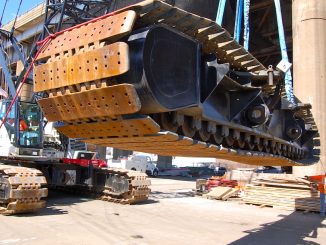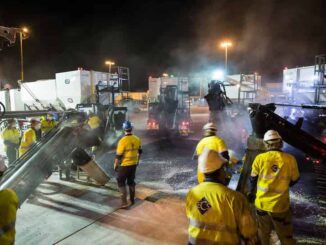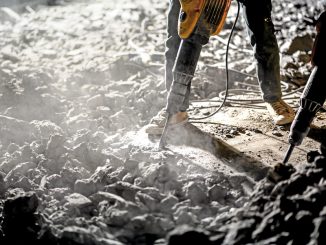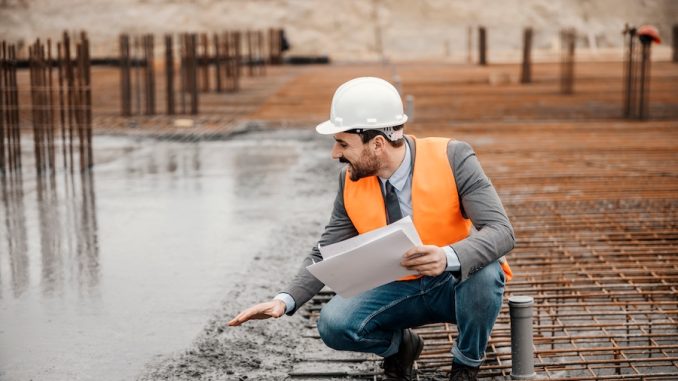
View the complete article here.
Designed to address the demanding needs of modern structures, high-performance concrete (HPC) surpasses conventional concrete not only in strength but also in a host of other significant properties.
One of the most notable attributes of HPC is its high compressive strength. Whereas traditional concrete may have a strength of 20-40 MPa, HPC can achieve strengths of 70 MPa or more. This elevated strength opens up new possibilities in construction—allowing for the design of thinner, more graceful structures that can span greater distances.
HPC is durable and formulated to withstand years of exposure to harsh environments without significant degradation. It is more resistant to the effects of weathering, chemicals, wear, and tear than standard concrete. This means structures made with HPC will generally have a longer service life and reduced maintenance needs.
The low permeability of HPC is critical in preventing the presence of harmful substances, such as chlorides and sulfates that can cause corrosion of reinforcement or deterioration of the concrete matrix. This particular quality is especially important in structures exposed to aggressive environments, like marine structures or those exposed to de-icing salts.
Despite its strength and durability, HPC is renowned for its workability. This means it can be easily placed and consolidated without leading to segregation or excessive bleeding. A workable HPC mix allows for more complex shapes and surface finishes, catering to both structural and aesthetic requirements.
HPC maintains its mechanical properties over time, resisting creep and shrinkage more effectively than conventional concrete. These long-term properties ensure that the structure not only remains strong but also retains its form and dimensionality over its lifespan, with minimal distortion or cracking.
The exceptional characteristics of HPC are largely due to its unique material composition. The use of supplementary cementitious materials (SCMs) like fly ash, silica fume, and slag cement enhances its properties. Silica fume, for example, greatly refines the pore structure—leading to increased strength and reduced permeability. Careful selection of aggregates also plays a role, with a focus on particle size distribution to achieve a dense, uniform matrix. Superplasticizers are often added to the mix to improve workability without compromising the water-to-cement ratio, which is crucial for strength and durability.
Benefits of High-Performance Concrete
The advent of high-performance concrete (HPC) has brought about a paradigm shift in the field of construction, offering numerous benefits that go far beyond those of conventional concrete.
Enhanced Longevity and Reduced Maintenance Costs
HPC’s superior durability significantly extends the life span of structures. This concrete withstands harsh environmental conditions, which translates into less frequent repairs and lower long-term maintenance costs. Buildings, bridges, and other infrastructures benefit from the prolonged structural integrity HPC provides—ensuring they remain safe and functional for many years.
Improved Resistance to Weathering, Chemical Attack, and Abrasion
HPC is highly resistant to various forms of deterioration—including weathering from exposure to sun and rain, chemical attack from aggressive substances, and physical abrasion from traffic and use. This resistance is critical for structures in challenging environments—such as industrial facilities, coastal areas, and regions with severe weather conditions. The robustness of HPC safeguards the steel reinforcement from corrosion, a common problem in less resistant forms of concrete.
Increased Structural Capacity Leading to More Slender and Efficient Structures
With HPC’s high strength-to-weight ratio, engineers can design buildings and other structures that are not only stronger but also more slender and aesthetically pleasing. The increased load-bearing capacity allows for more innovative designs—including longer spans without the need for intermediate supports and thinner, more elegant structural elements.
Sustainability Benefits Through Reduced Resource Consumption
HPC contributes to sustainability in the construction industry through its efficient use of materials. The enhanced strength means that less concrete is required to achieve the same structural capabilities, which reduces the consumption of raw materials and the energy required for manufacturing and transporting them. In addition, the longevity of HPC reduces the need for new materials for repairs or reconstruction—further conserving resources and minimizing the environmental footprint of construction projects.
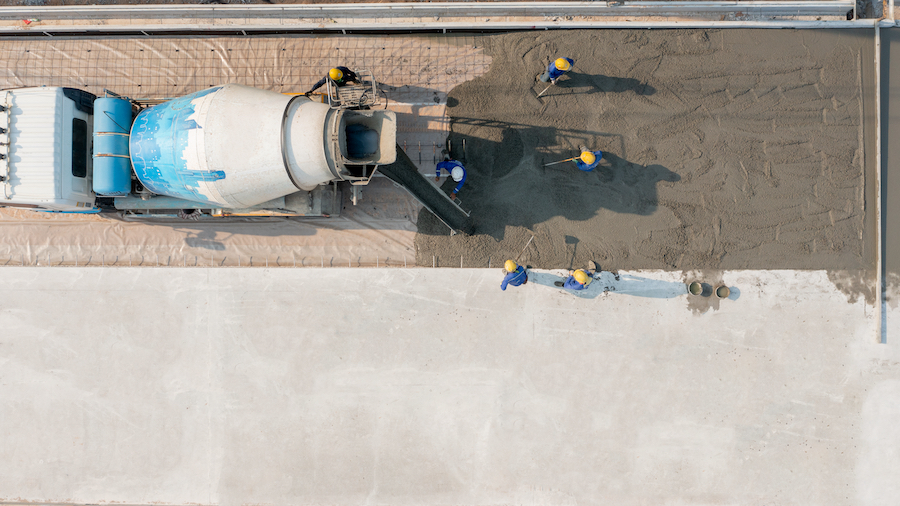
Applications of High-Performance Concrete
High-performance concrete (HPC) has found its place in a wide range of applications, revolutionizing the way we approach construction and design in the modern era.
HPC is an ideal material for constructing commercial and high-rise buildings due to its ability to support heavy loads and resist wind, seismic forces, and potential impact events. Its high strength allows for more slender columns and walls, which results in more usable interior space and attractive design possibilities.
Bridges are often exposed to extreme environmental conditions—such as freeze-thaw cycles, de-icing salts, and waterborne chemicals. HPC, with its low permeability and high durability, is well-suited to withstand these conditions—thereby extending the life span of such infrastructure and reducing the frequency and cost of maintenance.
Marine structures—including piers, seawalls, and breakwaters—benefit from the use of HPC due to its resistance to the corrosive effects of saltwater and the abrasive action of sand and silt. HPC’s resilience in these environments helps to prevent structural decay over time, ensuring the longevity of these critical installations.
The precision and controlled production environment of precast concrete components are enhanced by the use of HPC. It allows for faster production cycles due to its rapid strength gain, and its high durability reduces the need for repairs—making it a cost-effective option for mass production of structural elements.
For roads and pavements, HPC provides a durable surface capable of withstanding heavy traffic loads and reducing rutting and wear. Its longevity means that roadways require resurfacing less frequently, leading to less disruption for road users and long-term cost savings for maintenance organizations.
Design and Mixing of High-Performance Concrete
The creation of high-performance concrete (HPC) is a delicate science that requires meticulous design and rigorous quality control to ensure the mix meets the specific demands of modern construction.
The Role of Admixtures and Additives
Admixtures and additives are pivotal in the formulation of HPC. Materials like silica fume and fly ash are commonly incorporated into the mix to enhance its properties. Silica fume, for example, significantly increases the compressive and bond strength of concrete—while reducing permeability. Fly ash, a byproduct of coal combustion, contributes to the workability and durability of the mix and can also reduce the heat of hydration—thus preventing thermal cracking. These components react with the Portland cement in the mix, creating additional cementitious materials that improve the concrete’s overall performance.
The Importance of a Well-Designed Mix
A well-designed mix is crucial for achieving the desired properties of HPC. Proportions of water, cement, aggregates, and admixtures need to be carefully balanced. The water-to-cement (w/c) ratio is particularly important—a lower w/c ratio typically results in higher strength and durability but can make the mix more difficult to work with. This is where admixtures like superplasticizers come in, allowing high workability without increasing the water content.
Quality Control Measures During Mixing and Placing
Quality control (QC) is essential at every step of mixing and placing HPC. During mixing, QC ensures that the components are combined in the proper ratios and mixed thoroughly to produce a uniform and consistent batch of concrete. This includes monitoring the temperature and timing of the mix to prevent premature setting or the formation of clumps.
During placing, QC measures include ensuring the concrete is transported and poured within the correct time frame to avoid segregation or the loss of workability. The concrete must be properly consolidated in the forms to eliminate air pockets and ensure a dense and homogenous structure. Curing practices must also be carefully controlled to guarantee that the concrete develops its full strength and durability over time.
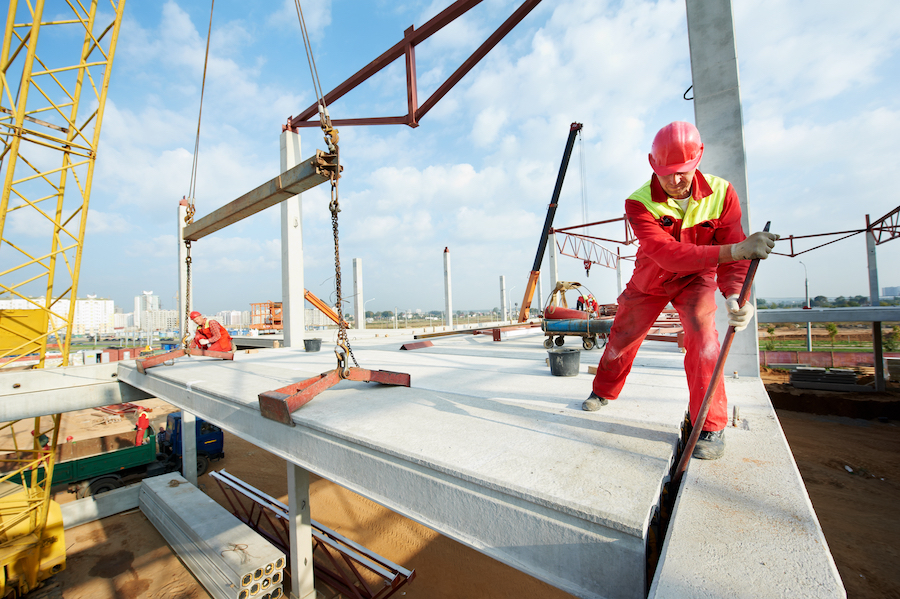
Challenges and Considerations
While high-performance concrete (HPC) offers numerous advantages, several challenges and considerations must be addressed to fully harness its potential.
When it comes to HPC, the initial cost can be higher than that of conventional concrete due to the use of specialized materials such as silica fume, superplasticizers, and other high-quality admixtures. The potential cost savings over the structure’s lifespan should also be considered—including reduced maintenance and repair costs, which may offset the initial investment.
The production of HPC involves precise proportions and careful mixing to achieve the desired properties. The technical skill required for mixing, placing, and curing HPC is typically higher than for regular concrete. This can include controlling the temperature of the mix, ensuring proper handling to avoid segregation, and implementing adequate curing procedures to prevent cracks and ensure strength development.
Despite its benefits, HPC is not suitable for all construction scenarios. It may not be necessary or cost-effective for projects where the superior properties of HPC are not required. In addition, the high strength of HPC can sometimes lead to brittleness—which needs to be mitigated through careful mix design and the inclusion of fibers or other materials to improve tensile strength and ductility. The success of HPC also depends on an understanding of how it will interact with other materials and the specific conditions of the construction site.
Conclusion
With its impressive strength, durability, and versatility—high-performance concrete enables the creation of more slender, efficient, and sustainable structures. As contractors and engineers continue to push the boundaries of architectural design and engineering, HPC will undoubtedly play a crucial role in shaping the durable and resilient infrastructure of the future.
View the complete article here.
What makes High-Performance Concrete (HPC) superior to conventional concrete?
HPC surpasses conventional concrete in compressive strength, durability, and workability, offering new possibilities in construction, including slender and more graceful structures.
In what applications is High-Performance Concrete (HPC) commonly used?
HPC is ideal for various applications, including commercial and high-rise buildings, bridges, marine structures, precast concrete components, and road pavements, due to its high strength, durability, and resistance to harsh environmental conditions.







































